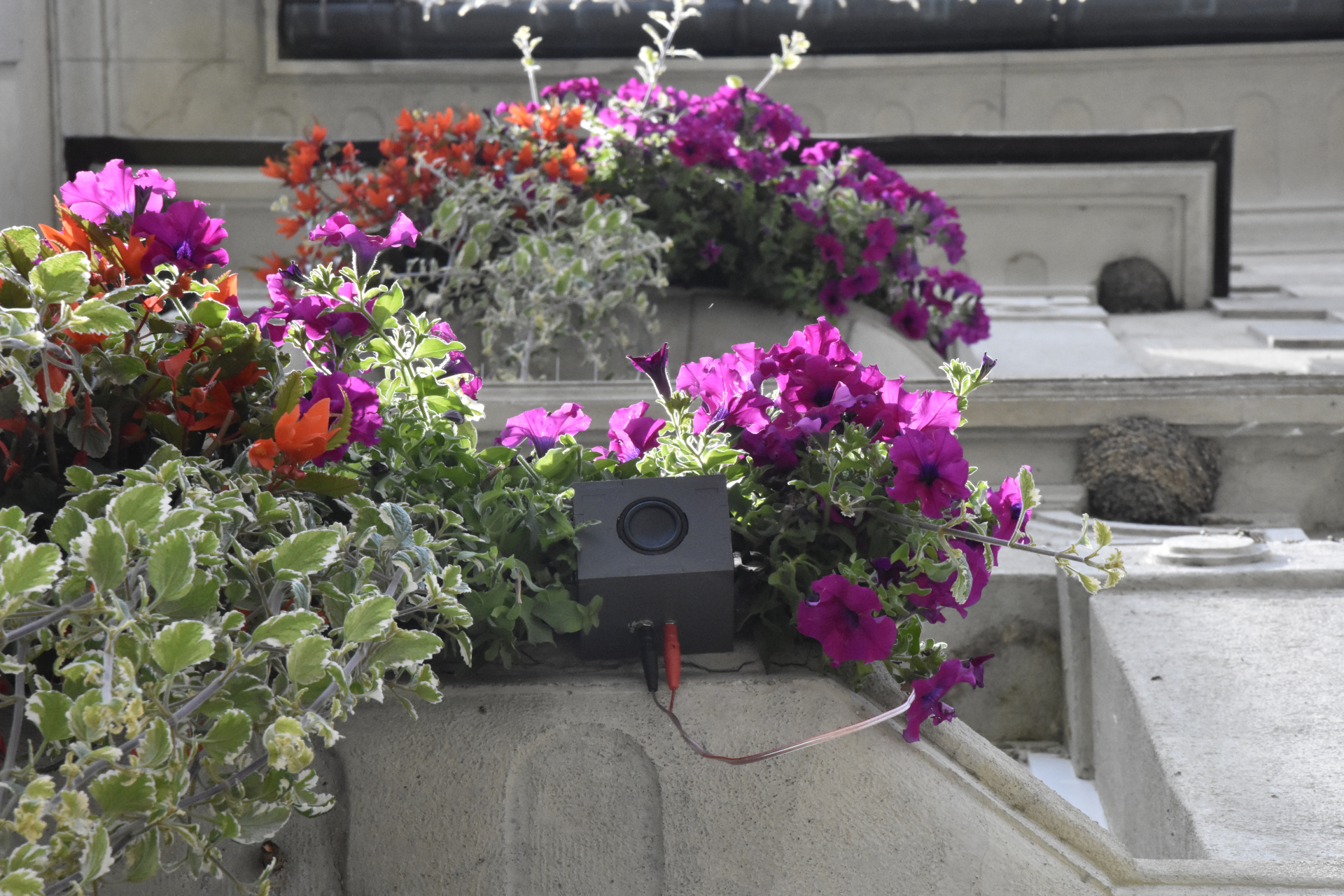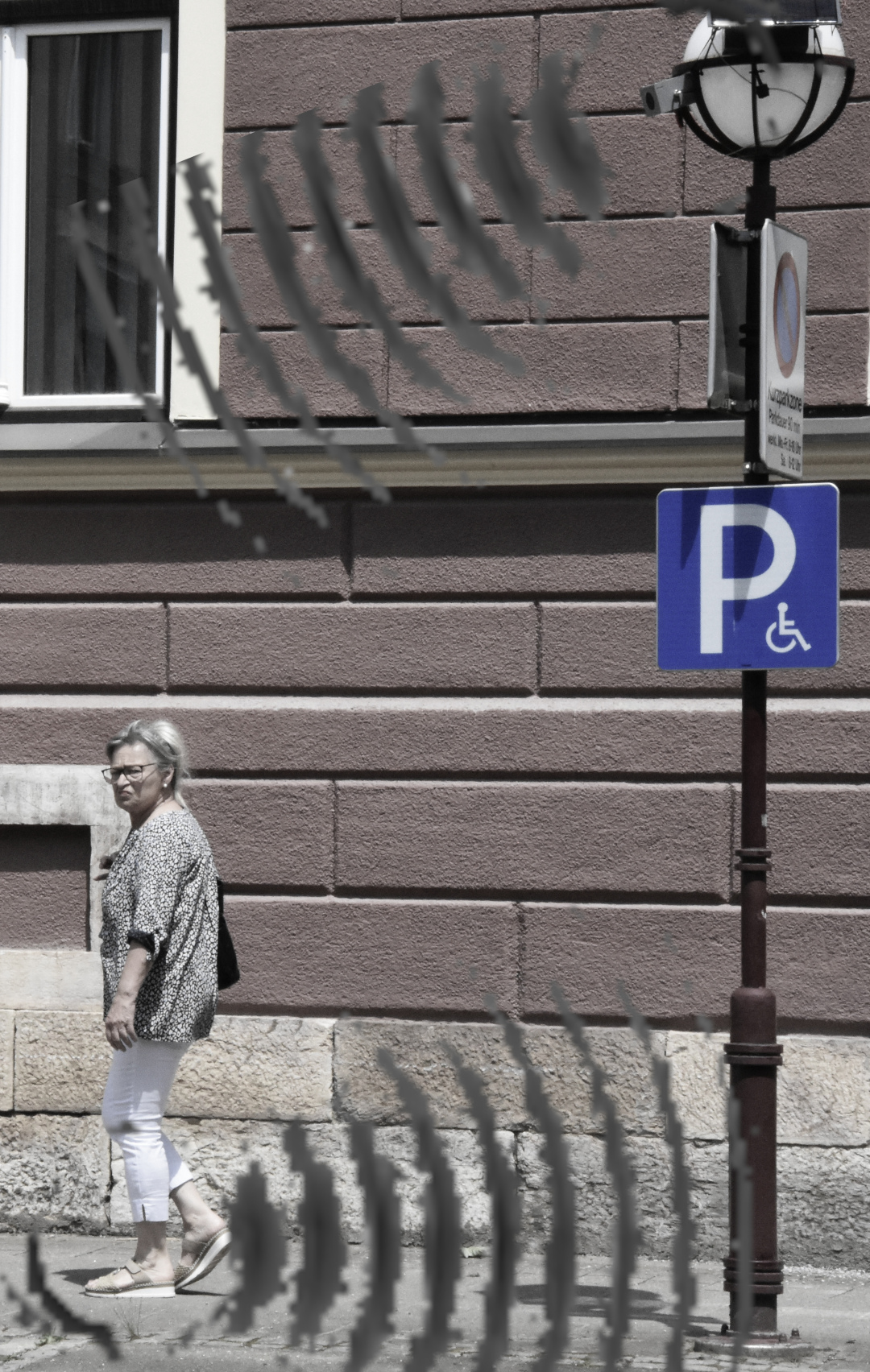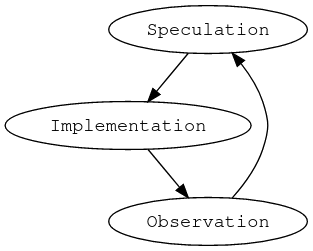2.1. Public Space
A first ecological aspect concerns how Trópos relates with, and integrates in, the acoustic environment that welcomes it. Trópos is primarily conceived as a sound piece for public spaces. Public spaces are very different from more traditional exhibition spaces. A first, obvious difference is that there is no "silence" in a public space. The acoustic environment of, say, a public square is populated by the sounds of birds chirping, people chatting, kids playing, cars passing by and so-on. Listen, for example, to sound recordings from Gleisdorf Hauptplatz. In such a situation, special attention must be given to how the piece acoustically integrates in a soundscape which is already relatively crowded. In Trópos this integration was mainly developed through an aesthetic reflection on 1. the timbral and temporal qualities of the sounds processes involved 2. the acoustic interaction these processes have with the soundscape around them.
2.1.1 (Im)Plausibility
Tropos timbral and temporal qualities are composed in order to acoustically blend within an outdoor soundscape. The strategy adopted here was to work initially with sounds which are plausible1 in this context, and then to explore the boundary between the plausible and implausible. The sonic qualities of Tropos might then recall either natural sounds (crowing, howling, chirping, blowing, etc.) or artificial sounds (motors and other kinds of static noises), which are usually found in an outdoor city context, but with a kind of electronic coloration. In this way, Tropos can sonically blend with a city soundscape while still being recognisable as an aesthetic sound intervention.
1. The term "plausible" refers back to Max Neuhaus and his creation of a permanent public sound work carefully designed to blend with its auditory environment. Max Neuhaus, "Notes on Place and Moment".
2.1.2 Interaction
At the same time, Tropos acoustically interacts with its environment by adapting its sonic behavior to the soundscape in which it is installed. This is concretely realized by directly coupling a non-standard FM synthesis algorithm with the ambience sounds picked up by the microphone. In this way, Tropos is in a constant acoustic exchange with its environment: it affects the soundscape by generating sounds, and it is affected by what sonically happens around it. This feedback loop between tropos and its site generates a lively sound situation in which the work is in a direct aesthetic interdependence with the place in which it is installed. The design of this aesthetic interdependence, and the study of the ecology of its interactions, is the main compositional focus of Tropos: site and work contribute in equal measure to the emergence of the ascoustic behaviors that can be heard in-situ.
2.2. Compositional Process
On a more general note, the compositional approach behind Tropos is characterized by a special attention towards the complex ecology of relations between compositional thought, aesthetic ideas and their material implementation. A small piece of software is what allows Tropos to relate non-standard synthesis technique with the live microphone input. This is the result of a form of iterative software experimentation, in which the relation between aesthetic speculation, algorithmic formulation, and the emerging aesthetic artefact constantly inform each other, in an almost inextricable compound that could be (very) roughly simplified as a single feedback loop (side Figure). In composing Tropos, special attention was given to this ecology of relations, and in particular to moments of aesthetic individuation: moments in which the direct exposure to the aesthetic qualities that emerge out of the experimental process redirect one's own aesthetic direction and reflection.
2.2.1 Data
As a result of this focus on moments of aesthetic individuation a dataset was produced that captures these moments. Essentially, this datset is an attempt at partially removing a certain precariousness that characterizes these volatile moments, making them available for later listening and reinterpretation, "freezing" that potential of hinting towards ways of experimentally engaging with their aesthetic performativity. Each entry in the dataset consists of a set of parameters that define a specific software configuration, coupled with a short recording of the audio output. In composing Tropos 97 entries were recorded, which later formed the basis for the work itself. A multimedia (graphics + sound) representation of the dataset is available here.


